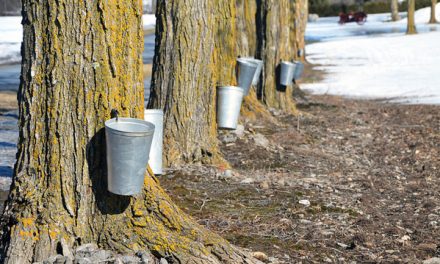GUELPH – The Ontario Federation of Agriculture, (OFA), like so many organizations and municipalities in Ontario has been trying to understand and educate farmers about the latest Ontario government effort to encourage more housing development.
Called Bill 23 or the More Homes Built Faster Act, it features significant changes in how land use in Ontario is looked at and used.
The Bill also makes changes to Conservation Authorities and development charges that will affect the rural landscape.
In January, the OFA presented a webinar looking at the impact of Bill 23 on agriculture across Ontario.
The OFA Webinar titled “Home Grown: The Impacts of Bill 23 on Agriculture Across Ontario” took place on Jan.12 and looked at the background of agricultural land use planning, and farmland in Ontario. The webinar explained the “challenges, opportunities, and impacts of Bill 23 and how individuals and county federations can engage in the land use planning process as critical stakeholders.”
Participants of the online presentation learned about farmland loss statistics in Ontario, and information about recent provincial housing initiatives, and how these impact agriculture. Topics covered included both background and changes to farm loss and urban development, as well as third-party appeals, development charges, conservation authorities and more.
Ontario farmers, industry partners, key stakeholders, and representatives from all three levels of government participated in the discussion.
There’s been an immense number of changes in the world of land use planning over the last eight months alone that have come very quickly without much time to fully understand the scope of impacts of what’s been proposed.
– Emily Sousa, Policy Analyst with OFA
Emily Sousa is a policy analyst with OFA specializing in agriculture and rural land use planning and farm property files. She obtained a master’s degree in rural planning and development at the University of Guelph. She is currently a candidate registered professional planner with the Ontario Professional Planners Institute.
Sousa explained why Bill 23 was important to understand.
Sousa explained, “You know that we know that we’re losing farmland in this province and so to begin, I’m actually going to try to paint everybody a picture of the state of farmland preservation here in Ontario, so of course we don’t need to remind everybody that farmland is an essential resource for the sustainability and security of our food systems environments and of course our economy, however the capacity of farmland and agricultural industries to provide this value, depends on the availability and the quality of [the] farmland available.”
Sousa explained that farmland continues to be at risk with increasing pressure to develop for housing.
“Over half of our most productive soils which are class 1 soils are right here in Ontario and within Ontario, farmland makes up less than five per cent of our current land base,” she said.
Despite farmland being considered a crucial part of a productive valuable essential finite and non-renewable resource, its value for the local national and global food systems is absolutely critical and yet farmland is continuously lost every single day, she explained.
Sousa said, “Based on the 2016 census, Ontario was losing about 175 acres of farmland a day. We’ve received the statistics from the 2021 census and that number has increased to 319 acres of farmland a day, the rate of farmland loss is increasing. This means of course that we’re losing our ability to provide safe affordable and sustainable food fiber and fuel for Ontario, Canada and the rest of the world.”
Imagining what 319 acres of land represents is important. It’s the equivalent of 1.2 million boxes of cereal or bottles of wine, it is 23.5 million apples or 75.6 million carrots or in urban terms 58 city blocks or 797 hockey rinks, and just under 5,000 tennis courts or just under 50,000 cars, “So imagine that because we’re losing that amount of farmland every single day.”
She said, farmland is taken out of production in several ways.
Farmland that was reassigned for an industrial use but until the developer works on it, it is still used for farmland. Consequently, it is considered farmland even though it is destined to be developed as something else soon.
“This is going to be counted as active farmland even though it is destined for development. So any farmland that’s not in production anymore will be counted as a loss whether that is because it’s been paved over for urban development or there are other reasons beyond urban development such as perhaps an aggregate or gravel mine has moved in, or maybe even farmers are leaving agriculture because of viability concerns, or another option is maybe a person has bought an estate property and they’re no longer interested in farming that property, so regardless of the reason, if it’s not an act of production, it is a loss and it is a loss of a critical resource, and planning needs to consider all the reasons for farmland loss and create policies to support farmers agricultural viability and protect farmland.”
Official plans are the primary tool for implementing the provincial policy statement (PPS), but their policies have to be consistent with provincial policy. The PPS is a long-term and publicly informed vision for how and when lands will be used in a community.
“For example, they’ll designate lands based on prime agricultural rural commercial industrial residential mixed use or other uses by their size, and location and they will also outline where necessary municipal services and facilities will be needed such as water roads sewers and areas where your municipalities should grow or intensify, which is key and remember that part and existing areas where your municipality could improve,” said Sousa.
“Most major farmland loss at the municipal level will likely happen through an official plan review or an official plan amendment,” she said. “Many of us are curious to know how much land has been lost to urban development.”
Her research showed between 2,000 and 2017 Ontario lost 72,000 Acres of prime farmland.
Official Plan amendments are where farmland can be lost.
There have been 500 official plan amendments. This includes large urban boundary or settlement areas, boundary expansions as well as the accumulation of individual amendments incrementally applied over a rural area.
“We know this number has grown significantly since 2017.”
She said, thousands of acres of farmland is being affected by the expansion of urban boundaries. “All of this illustrates the cumulative impact that seemingly small planning decisions have on the grand total of farmland loss in our province and we all know, and recognize that this loss is unsustainable, so we have to plan our communities for the present into the future and make decisions that firmly prioritize the protection of this land, and that includes designing land use policies and making decisions to keep growth within fixed urban boundaries and intensify urban and settlement areas where possible.” She said, “Agricultural land preservation and growth management are two sides of the same coin, so you can’t be in favour of protecting farmland without supporting intensification within your existing communities.”
The Ontario government is dealing with a housing crisis. The government has set a goal of building 1.5 million homes over the next 10 years in both rural and urban communities alike.
Despite the yearly loss of farmland, Sousa believes that houses can be built, and farmland preserved at the same time. She wants farming, commodity, and community organizations to work together to remind government of the balance that has to be achieved between urban growth and agricultural land preservation.
“There’s been an immense number of changes in the world of land use planning over the last eight months alone that have come very quickly without much time to fully understand the scope of impacts of what’s been proposed.”
The best way to build additional housing, and protect farmland is to build inwards and upwards. Changes have been proposed to allow up to three additional residential units per lot province-wide and this decision overrides any municipal zoning and allows these units to receive approvals without having to apply for specific Planning Act applications. These changes will apply to urban land that has serviced water and sewer lots.
Bill 23 will eliminate the planning responsibilities from several upper tier municipalities, currently these include the regions of Durham, Alton, Niagara, Peel, Waterloo, York, and the county of Simcoe. Amendments would allow for additional upper tier municipalities to be added to this list in the future, so what this proposal does, is effectively download all previous authority and responsibility of upper tier municipalities such as county and regions to their lower tier municipal counterparts, such as towns, cities, and townships. This strategy may streamline some planning permissions’ processes but at the same time it’s unclear how these changes will improve community livability. Downloading all planning responsibilities and decisions at the local level may lead to uncoordinated decision-making, resulting in scattered inefficient and piecemeal development that could be quite expensive for municipalities to maintain and occurs at the expense of sound regional planning.
Upper tier municipalities play a large role in planning in a rural community, and that includes planning in a way to preserve farmland while allowing for urban growth.
The need for a public meeting for a draft plan for a subdivision has been removed from the Planning Act. The OFA feels this may lead to poor planning decisions. Public meetings are one way for agricultural voices to be heard.
The Ontario Land Tribunal is responsible for hearing and resolving issues on municipal appeals. Bill 23 eliminates third party appeals. Farmers need an avenue to appeal decisions that may affect their farm operations.
The Bill changes some aspects of how development charges work. The Bill transfers some costs of service for new development from developers to taxpayers.
Some municipalities are announcing they will have to raise their property taxes by 10 per cent to make up for any lost revenue from these changes.
Conservation authorities are affected by Bill 23 in several ways. Here are just two: 1) They currently rent 3,000 acres to farmers. They would be asked by the province to list any lands they have that could be used for housing. 2) There will be a new streamlined process for severing conservation lands to encourage faster development.













